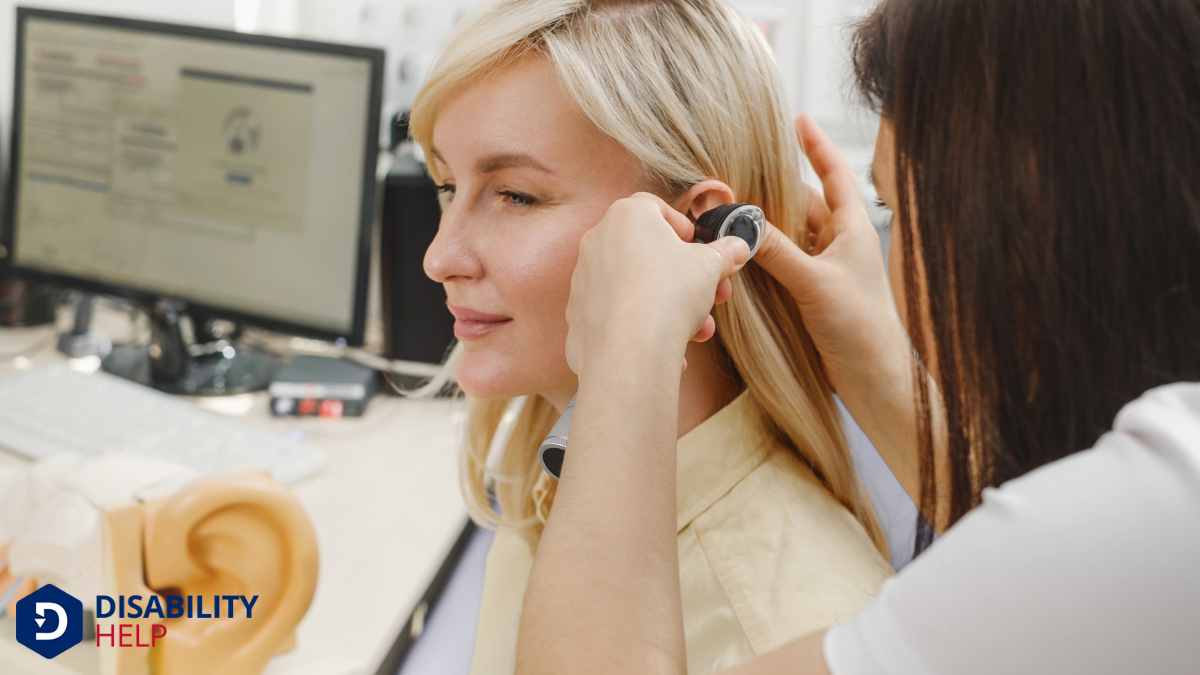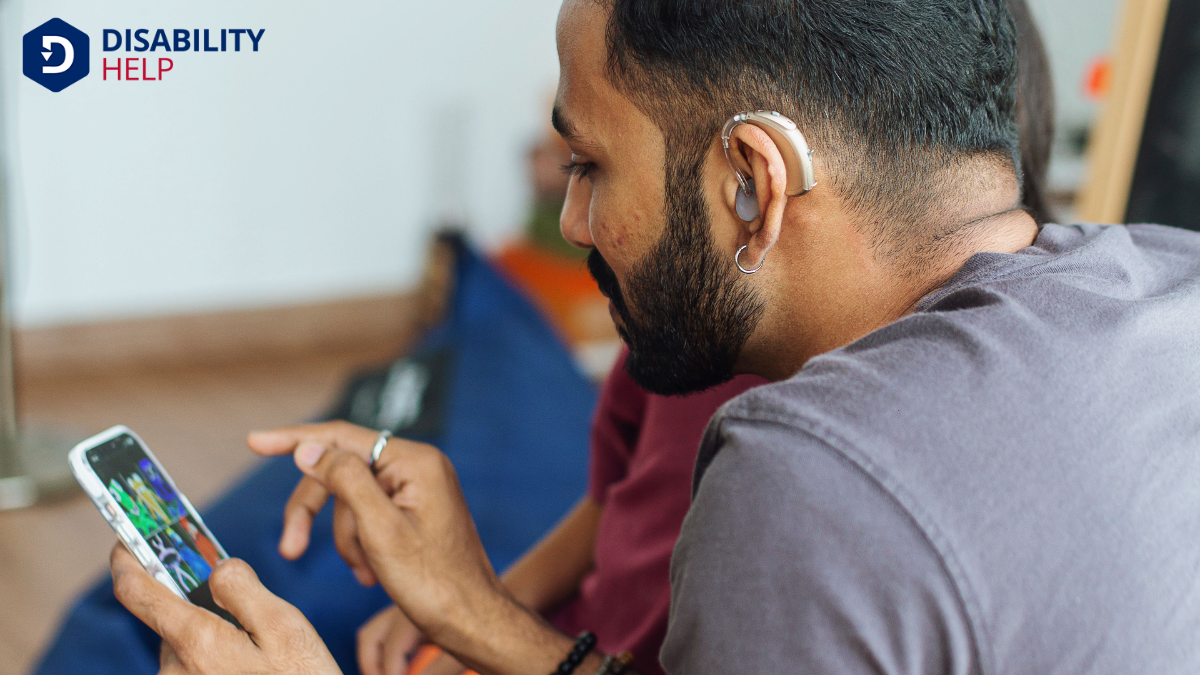When we're discussing hearing solutions, it’s crucial to differentiate between hearing aids and FM systems. Both serve unique purposes in addressing hearing challenges, and understanding their differences can be pivotal in choosing the right one for our needs. While hearing aids amplify surrounding sounds tailored to individual specifications, FM systems shine in delivering clear audio directly from a speaker over distances. Curious about their distinct roles and how they complement each other? Let's explore further.
Key Takeaways
- Hearing aids amplify all surrounding sounds, while FM systems transmit a specific speaker’s voice wirelessly.
- FM systems excel at reducing background noise in noisy environments, unlike hearing aids.
- Hearing aids are designed for personalized sound amplification based on individual hearing lossPartial or total inability to hear sounds in one or both ears. profiles.
- FM systems cover greater distances for communication, suitable for large spaces like lecture halls.
- Hearing aids are ideal for quiet settings, enhancing one-on-one conversations and social gatherings.
Understanding Hearing Aids
When we explore hearing aids, we find that these devices are designed to amplify sound for individuals with hearing loss. They make sounds louder and clearer, helping us engage more fully in conversations and enjoy the world around us.
Hearing aids consist of a microphone, amplifier, and speaker, each playing a vital role. The microphone picks up sounds, the amplifier boosts them, and the speaker delivers the enhanced audio into our ears.
How FM Systems Work
Let's explore how FM systems work by focusing on their core components: the transmitter and receiver.
These systems use frequency modulation technology to send signals wirelessly from a speaker directly to a listener's receiver. This process enhances clarity and reduces background noise, making it easier for us to understand speech in noisy environments.
Signal Transmission Process
FM systems work by using a specialized signal transmission process that enhances audio clarity for the listener.
Imagine we're in a noisy environment where hearing every word is vital. FM systems help by sending sound directly to our ears. They do this by converting sound into radio waves. These waves travel through the air, bypassing much of the ambient noise. This guarantees the sound remains clear and focused.
We can think of it like having a direct line to the source of the sound, minimizing interference. This process is especially beneficial in settings like classrooms or large gatherings.
Receiver and Transmitter
To understand how FM systems work, we need to look at the roles of the receiver and transmitter. The transmitter captures the speaker's voice directly, guaranteeing clarity. It sends this audio signal wirelessly to the receiver.
The receiver, often worn by the listener, processes and delivers the sound to the hearing aid or directly to the ears. By using this system, we reduce background noise interference and guarantee clear communication in noisy environments.
Here are some key points to think about:
- The transmitter is typically a small microphone worn by the speaker.
- Receivers can be integrated with hearing aids or used as standalone devices.
- FM systems enhance speech understanding in challenging listening situations.
- They're ideal for classrooms, meetings, and public settings.
- Both components must be tuned to the same frequency for best performance.
Frequency Modulation Technology
Understanding the roles of the receiver and transmitter sets the stage for exploring the magic behind Frequency Modulation (FM) technology. FM systems function by transmitting sound through radio waves from a microphone worn by a speaker to a receiver connected to our hearing aids. This process reduces background noise, ensuring we hear the speaker with clarity. Imagine a teacher's voice reaching us directly, bypassing classroom chatter.
The transmitter picks up the sound and converts it into a signal that travels on a specific frequency. Our receivers catch this signal and deliver it to our ears, ensuring we hear clearly.
This technology bridges distances, effectively overcoming barriers that regular hearing aids might face. It enhances our listening experience, especially in noisy environments or when the speaker is far away.
Key Differences in Functionality

Although both hearing aids and FM systems aim to improve auditory experiences, their functionalities differ considerably. Hearing aids primarily amplify sounds directly for the wearer, adjusting frequencies to suit personal hearing loss profiles.
On the other hand, FM systems enhance sound by transmitting it wirelessly from a microphone worn by a speaker directly to a receiver worn by the listener, minimizing background noise.
Let’s break down their key differences:
- Personalization: Hearing aids are tailored to individual hearing loss levels.
- Range: FM systems cover greater distances, allowing communication even when the speaker and listener are apart.
- Background noise reduction: FM systems excel at reducing environmental noise.
- Direct transmission: FM systems provide clearer sound by directly transmitting the speaker’s voice.
- Amplification: Hearing aids amplify all sounds around the user.
Understanding these differences helps us choose the right device for our needs.
Situations Ideal for Hearing Aids
Hearing aids are particularly advantageous in several situations where personalized sound amplification is essential. When we're in a quiet environment like a one-on-one conversation or watching television at home, hearing aids shine. They amplify sounds specifically for our unique hearing needs, making it easier to follow conversations without background noise interference.
In social gatherings, hearing aids help us engage more fully by boosting speech clarity. They’re also beneficial in work settings where we need to focus on individual voices or small group discussions.
Daily activities like shopping or dining out become more enjoyable as hearing aids enhance our ability to hear important sounds around us. By adapting to our specific hearing loss, hearing aids provide a tailored listening experience in various everyday situations.
Environments Suited for FM Systems
While hearing aids excel in personal sound amplification, FM systems come into their own in environments where background noise and distance challenge our ability to hear clearly.
Let’s explore where FM systems shine. In large, open spaces or noisy settings, they help us focus on the speaker’s voice by transmitting sound directly to our ears. This capability can transform our listening experience in several scenarios:
- Classrooms: Teachers’ voices reach us clearly, even from across the room.
- Lecture Halls: We can follow presentations without straining, despite the large space.
- Churches: Sermons and hymns become more accessible, enhancing our participation.
- Conferences: Hear speakers effectively, regardless of room size or noise level.
- Outdoor Events: Enjoy clear sound, whether we’re at a concert or sports event.
These environments highlight the unique benefits of FM systems.
Compatibility With Other Devices

When we consider compatibility with other devices, hearing aids and FM systems offer distinct options.
Hearing aids often connect directly to smartphones and other Bluetooth-enabled devices, enhancing ease of use.
On the other hand, FM systems can integrate with various hearing aids, providing a seamless experience in diverse settings.
Hearing Aid Connectivity Options
Modern hearing aids are marvels of technology, offering various connectivity options that enhance user experience. By linking our hearing aids with other devices, we can enjoy greater convenience and flexibility in our daily lives.
Let’s explore some connectivity options available:
- Bluetooth: Seamlessly connect to smartphones, tablets, and computers for streaming audio directly to our hearing aids.
- Telecoils: Use induction loop systems in public places like theaters and churches for clearer sound.
- Wireless Accessories: Pair hearing aids with remote microphones or TV streamers for improved listening in noisy environments.
- Mobile Apps: Control settings and monitor hearing aids through apps on our smartphones.
- Smart Home Integration: Connect with smart home devices for alerts and notifications.
These options make managing hearing and interacting with technology simpler and more effective.
FM System Integration Methods
Although FM systems are often associated with educational environments, they're incredibly versatile and can integrate with a variety of devices to enhance listening experiences in numerous settings. We can connect FM systems with hearing aids, cochlear implants, and even public address systems to guarantee everyone hears clearly.
This versatility extends to personal use, too. Imagine linking an FM systemAn assistive listening device that uses radio signals to transmit sound directly to a person’s hea... to a television, computer, or smartphone—suddenly, we've got a customized listening solution.
Compatibility is key, and many modern FM systems offer wireless connectivity options. They can pair with Bluetooth-enabled devices, allowing seamless integration without cumbersome wires.
When choosing an FM system, let’s consider our specific needs and existing devices. This way, we ascertain that our chosen system will enhance our auditory experiences in every context.
Cost and Accessibility Considerations
Maneuvering the costs and accessibilityThe design of products, devices, services, or environments to be usable by people with disabilities.... of hearing aids and FM systems can be essential for those seeking to improve their auditory experience.
We recognize this journey can be overwhelming, so let's break it down together. Hearing aids often come with a high price tag, influenced by technology and features. FM systems, while sometimes more affordable, can still require an investment, especially when considering compatibility with existing devices.
Accessibility is another factor; some areas may have limited providers or support for these technologies.
Here are some key points to keep in mind:
- Insurance Coverage: Check if your plan covers hearing aids or FM systems.
- Financial Assistance: Explore grants or state programs.
- Trial Periods: Look for options that allow testing before buying.
- Online Resources: Find reviews and comparisons.
- Local Availability: Research nearby specialists.
Making the Right Choice for Your Needs
How do we decide between hearing aids and FM systems when each offers distinct advantages?
First, let's consider our specific hearing needs. If we struggle in noisy environments or distance from a sound source, FM systems might be ideal due to their ability to transmit clear audio directly to us. On the other hand, hearing aids amplify sounds around us, making them suitable for everyday use in varied settings.
Next, think about where we spend most of our time. If we frequently attend lectures or meetings, an FM system could enhance our experience. However, for general daily interactions, hearing aids might suffice.
Let’s also consider budget, as FM systems can be more costly. Ultimately, our choice should align with our lifestyle and hearing goals.
Conclusion
To summarize, we've explored the distinct roles that hearing aids and FM systems play in enhancing auditory experiences. While hearing aids are perfect for daily use, FM systems shine in challenging environments by reducing background noise. We should consider our specific needs, environments, and budgets when choosing between them. Remember, both devices can often work together for the best hearing. Let's make sure we select the right tools to improve our listening experiences and communication.






